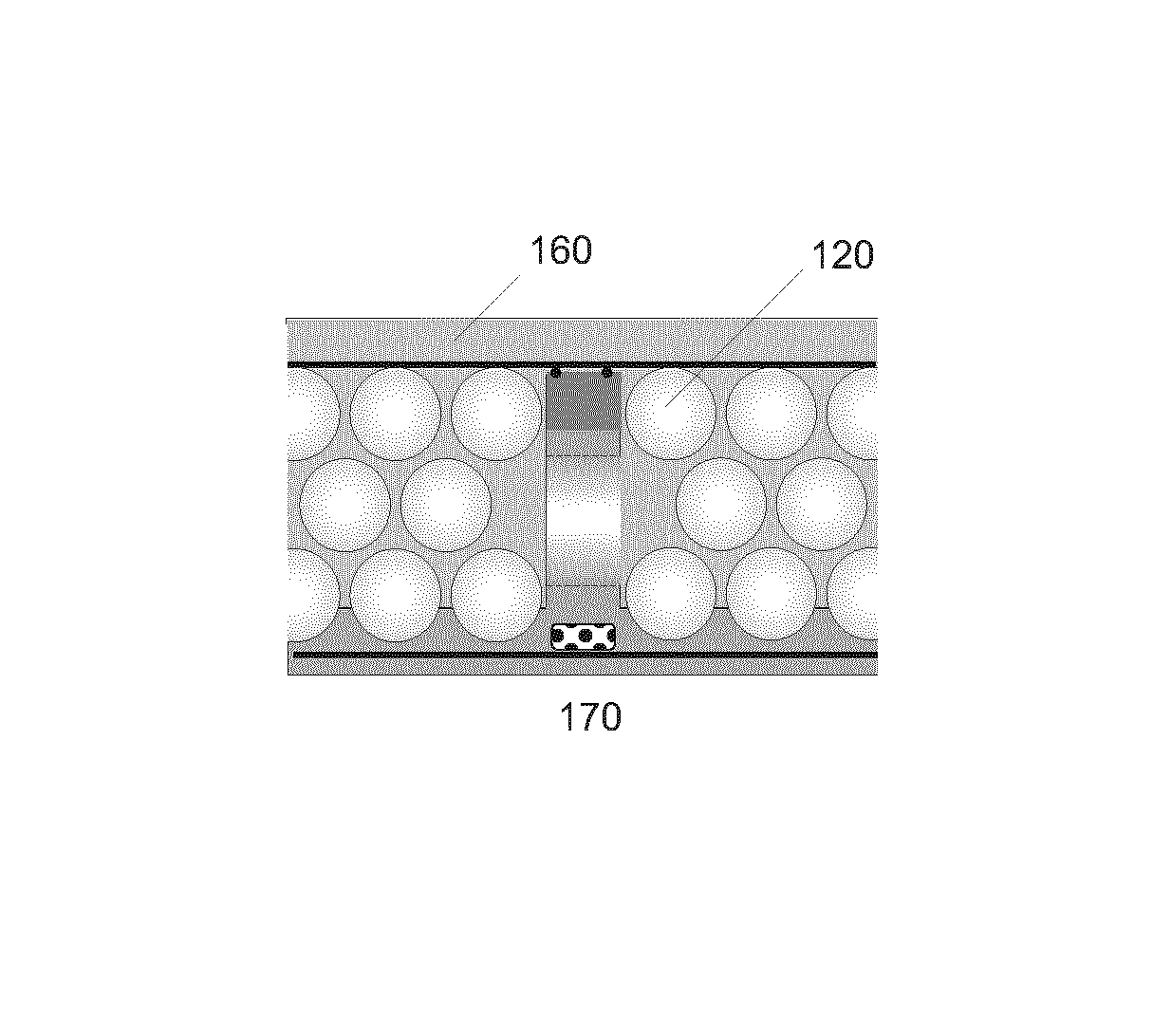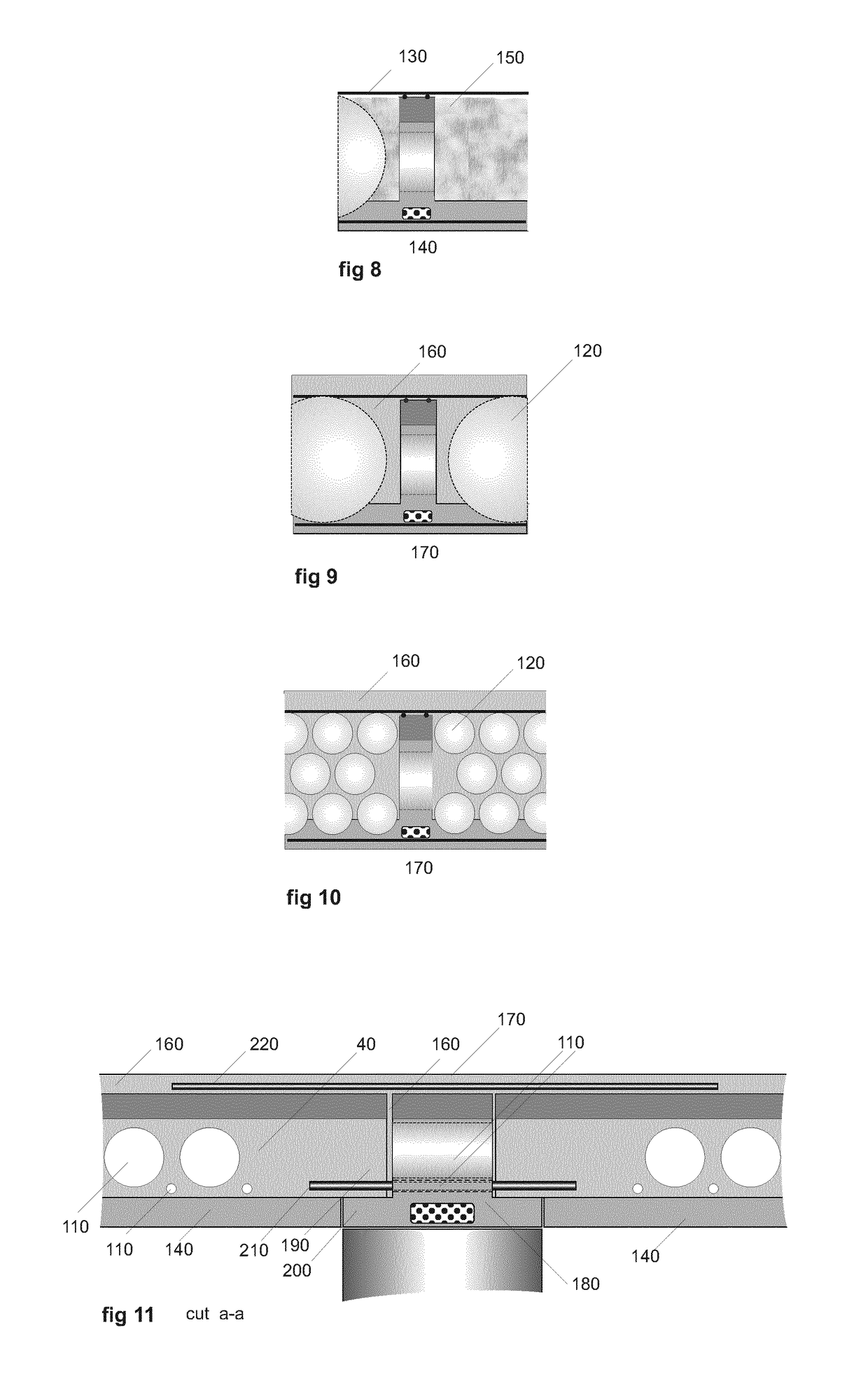System and method for biaxial semi-prefabricated lightweight concrete slab
a lightweight, flat-plate concrete technology, applied in the direction of structural elements, building components, construction materials, etc., can solve the problems of additional means, time-consuming and expensive horizontal scaffolding and temporary vertical supports, and labor for both erection and removal of supports, and achieve the effect of reducing the cost of labor and time-consuming
- Summary
- Abstract
- Description
- Claims
- Application Information
AI Technical Summary
Benefits of technology
Problems solved by technology
Method used
Image
Examples
Embodiment Construction
[0064]The invention comprises a practical and cost efficient semi-precast element system with which lightweight homogeneous biaxial concrete slabs can be realized without the use of formwork or temporary supports—a configuration, which can be positioned directly on a buildings vertical supports as columns or walls, and afterwards be connected by final concreting. In addition, the final slab has increased bearing capacity and improved control of deflection and cracking.
[0065]The key elements in the present invention are lightweight biaxial concrete slabs comprising unique composite semi-prefabricated stringers and semi-precast concrete elements in which the semi-precast stringers are integrated, and where post-tension tendons in the stringer are placed in an optimal way for maximum effect of post-tensioning of the semi-precast system, while still maintaining a simple and practical solution.
[0066]FIG. 1 illustrates a cross section cut in a traditional semi-precast element, where a thi...
PUM
| Property | Measurement | Unit |
|---|---|---|
| thickness | aaaaa | aaaaa |
| strength | aaaaa | aaaaa |
| speed | aaaaa | aaaaa |
Abstract
Description
Claims
Application Information
 Login to View More
Login to View More - R&D
- Intellectual Property
- Life Sciences
- Materials
- Tech Scout
- Unparalleled Data Quality
- Higher Quality Content
- 60% Fewer Hallucinations
Browse by: Latest US Patents, China's latest patents, Technical Efficacy Thesaurus, Application Domain, Technology Topic, Popular Technical Reports.
© 2025 PatSnap. All rights reserved.Legal|Privacy policy|Modern Slavery Act Transparency Statement|Sitemap|About US| Contact US: help@patsnap.com



